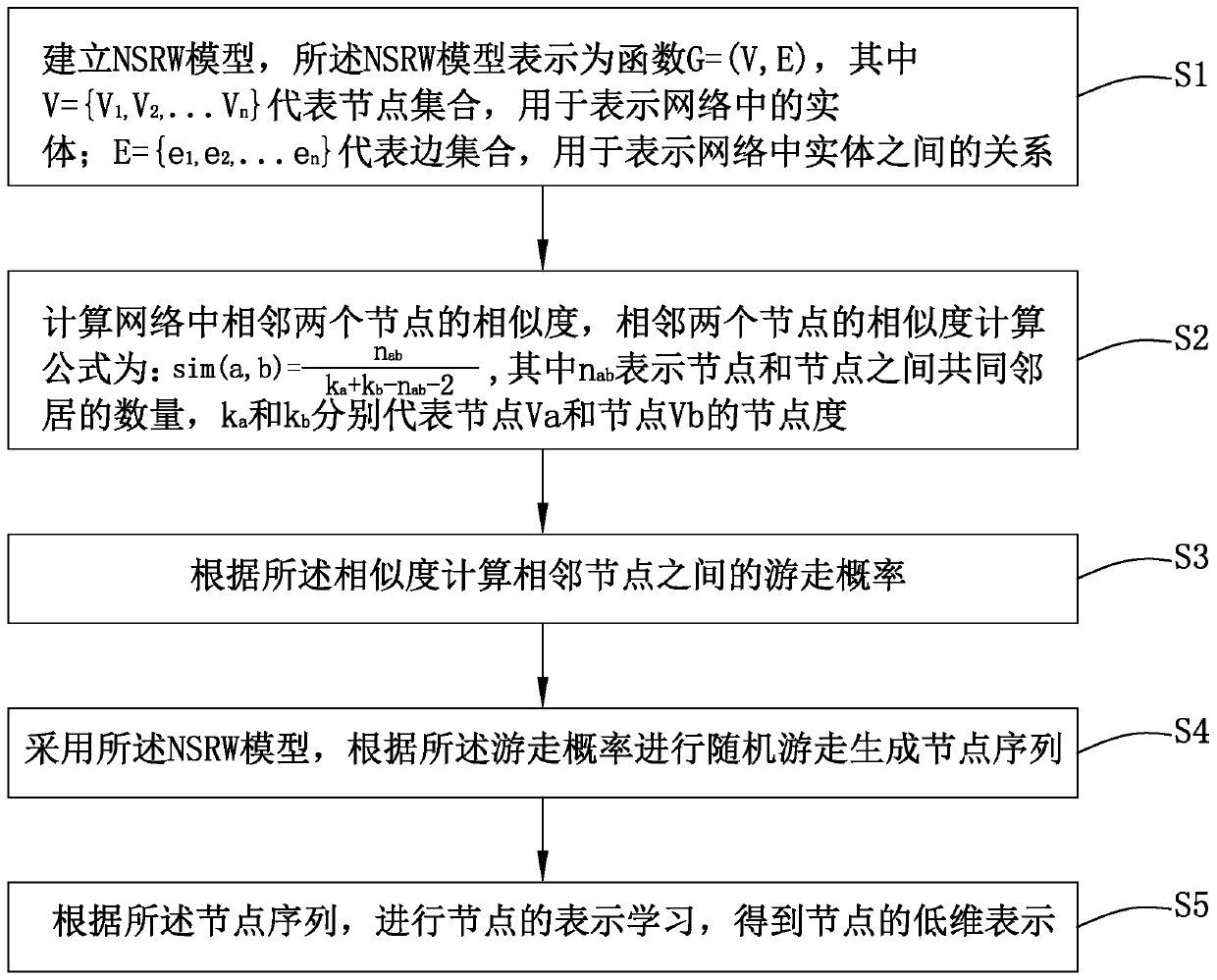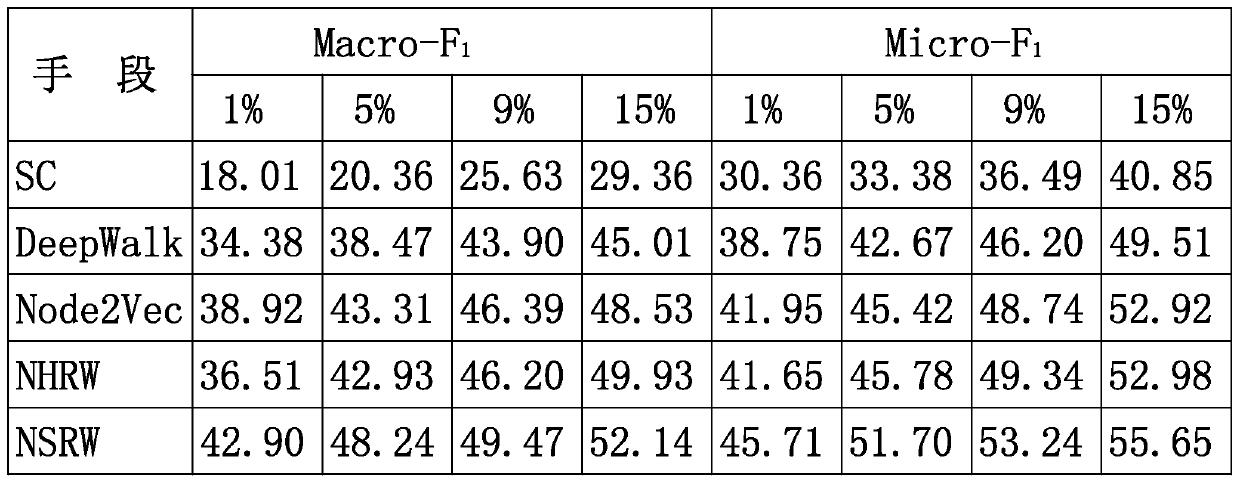Network representation learning method based on random walk
A technology of network representation and learning method, applied in the direction of computer parts, instruments, characters and pattern recognition, etc., can solve the problems of ignoring the similarity of different node links and low classification accuracy, so as to improve classification accuracy and avoid redundant Effect
- Summary
- Abstract
- Description
- Claims
- Application Information
AI Technical Summary
Problems solved by technology
Method used
Image
Examples
Embodiment Construction
[0026] The technical solutions in the embodiments of the present invention will be clearly and completely described below with reference to the drawings in the embodiments of the present invention. Obviously, the described embodiments are only a part of the embodiments of the present invention, but not all of the embodiments. Based on the embodiments of the present invention, all other embodiments obtained by those of ordinary skill in the art without creative efforts shall fall within the protection scope of the present invention.
[0027] The invention provides a network representation learning method, the method comprising the following steps:
[0028] S1: Establish an NSRW model, the NSRW model is expressed as a function G=(V, E), where V={v 1 ,v 2 ,…v n} represents a set of nodes, used to represent entities in the network; E={e 1 ,e 2 ,…e n} represents the set of edges and is used to represent the relationship between entities in the network.
[0029] The NSRW (Node...
PUM
 Login to View More
Login to View More Abstract
Description
Claims
Application Information
 Login to View More
Login to View More - R&D
- Intellectual Property
- Life Sciences
- Materials
- Tech Scout
- Unparalleled Data Quality
- Higher Quality Content
- 60% Fewer Hallucinations
Browse by: Latest US Patents, China's latest patents, Technical Efficacy Thesaurus, Application Domain, Technology Topic, Popular Technical Reports.
© 2025 PatSnap. All rights reserved.Legal|Privacy policy|Modern Slavery Act Transparency Statement|Sitemap|About US| Contact US: help@patsnap.com



